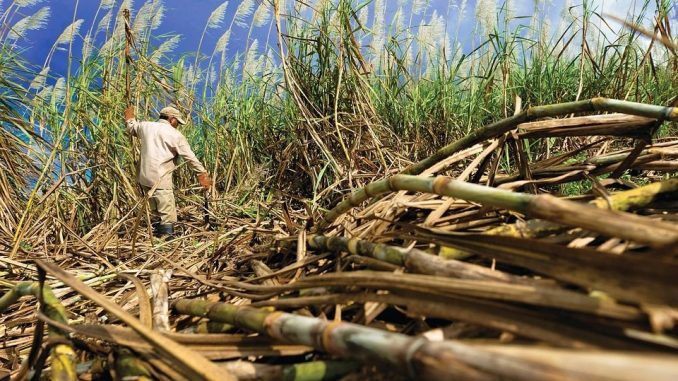The human resource development index indicates that Busoga region is not doing well on the poverty scale. Several attempts to mitigate this atrocious situation have been done by both the local and central governments, mostly through emphasizing agriculture. In the early 2000s, there was a surge in the rice production in most parts of Busoga, that was mostly done in swamps and wetlands.
With the vigilance of NEMA to conserve these wetlands, paddy farmers were chased from these wetlands, which was a big blow to household income. Towns like Busembatya, Busowa, Idudi, Namutumba, Nakivumbi, Kasambira etc, developed so fast because they were collection centers of rice and mill hullers. Without the flow of rice from villages, these emerging towns collapsed.
With the encouragement of the government, the farmers took on growing maize in large amounts, and for years, Busoga was one of the main producers of maize. Maize became the cash cow for most households until the market crashed due to overproduction and the closure of the South Sudan supply line. The peasant farmers had to look for another survival instinct, that is when the sugarcanes came into the picture.
The campaign for sugar cane became both a political tool for local politicians and the competing investors who were out to claim a niche into Madhvan’s dominance in the region. The local politicians saw it as a solution to the pangs of poverty and patterned with the investors to push the sugarcane campaign. Ultimately it paid off with massive production.
However, the investor rivalry played to the detriment of the local farmer. The big players had been maligned as cheats by the new entrants to the extent that out-growers rebelled against Madhvan and instead supplied the new players not knowing that the new players didn’t have the capacity to consume all the cane that they produced. Now that the supply had out-stripped demand, the market forces sent the prices tumbling.
At some point, a tone of cane was at Shs180,000, presently its Shs120,000 — the politics in this is that the major players who had been shunned by the out-growers are not enthused to take on the glut as a payback tweak. The decision to export the cane to Olepito sugar is a last-ditch effort to salvage the dire situation. There are six new sugar factories around the Busoga region, namely, Mayuge sugar, Kaliro sugar, GM sugar, Seven-star sugar, Sezibwa sugar, and Kamuli sugar.
The combined capacity does not match that of Kakira sugar, the major player in the region, yet farmers had snubbed it. The same politicians who had encouraged farmers to grow cane have now turned the guns on the government, for failure to rein in on the buyers to maintain the original price. Therefore, politics has overshadowed the economics.
The massive cane growing has also adversely affected food security in the region. Almost all arable land is under cane production at the expense of food production. An acute food shortage has set in. Busoga tenure system does not provide for large scale farming, sugarcane requires large chunks of land, this makes it hard to breakeven, at the end of the day, the farmer gains less.
Politicians opposed to the government have clutched on this to paint cane production as a ploy to keep the region in abject poverty. This view has gained traction looking at the president’s stance on zoning. The argument advanced is that in a free-market economy, there shouldn’t be restrictions. The chairman, Busoga sugarcane out-growers Association, Issa Budhugo, claimed that the failure by government to control prices has forced them to export sugarcane to Kenya. The reality is that sugar stocks among the large producers are not moving, thus affecting the amount of sugarcane crashed.
Unless the sugarcane issue is handled properly, it may spell doom to the political fortunes of government. Politicians on the other side of the political divide are critical of the lukewarm approach to the issue of cane growing. It’s an emotive issue that has dragged the Busoga kingdom in the fray, to voice the concern of its people. Dr. Joseph Muvawala, has been quoted urguing lawmakers to pass the Bill in a sense that the local farmers can earn from their sweat.
In November last year, parliament passed the sugar Bill 2016. They sought to provide for the development, regulation, and promotion of the sugar industry to ensure that there is a sustainable, diversified, harmonized, modern and competitive sugar sector. In the Bill, the government had proposed zoning of 25km between mills, with out-growers in that specific area supplying only a particular factory. This was supported by the big player, Kakira sugar but opposed by the small players.
However, the legislators voted against the zoning, citing fears that it would create near-monopolies for localized manufactures without competition from others leading to exploitation of farmers by paying low prices. But the president refused to assent to the bill and returned it to parliament for consideration. This is where the political equation becomes quadratic, whereas the president is using economic lenses to view the benefits of zoning, the political lenses portray him as being insensitive to concerns of local farmers in preference to a single Madhvan. The balancing act must play out if NRM has to keep Busoga as its stronghold in the next election, sugarcane forms the bedrock of economic survival for most people throughout the social spectrum.
A reckless walk on the political eggshells without assessing the impact of any decision may be a waterloo at the 2021 ballot in the Busoga region.




